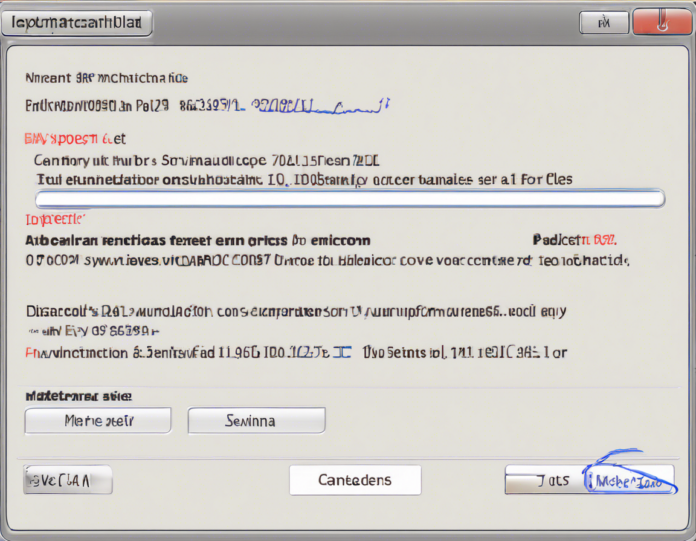In the world of online payments and e-commerce, fraud prevention and security are paramount. Merchants must stay vigilant and proactive in safeguarding their businesses against potential threats, such as duplicate transactions. One notable red flag that merchants should be aware of is the “Duplicate Transaction ID” alert.
Understanding Duplicate Transaction ID
When a payment processor detects a duplicate transaction ID, it means that a transaction with the same identifier (ID) has been processed more than once. This could happen due to various reasons, such as technical glitches, customer errors, or potentially fraudulent activities. Regardless of the cause, merchants must promptly address these instances to prevent any adverse impact on their business.
Consequences of Duplicate Transaction IDs
Encountering duplicate transaction IDs can lead to several detrimental consequences for merchants, including:
– Financial Loss: Redundant transactions can result in overcharging customers and subsequent refunds, leading to financial losses for the business.
– Customer Dissatisfaction: Double-charging customers can severely impact trust and satisfaction, potentially driving them away from doing business with the merchant in the future.
– Operational Disruption: Dealing with duplicate transactions can consume valuable time and resources, disrupting normal business operations.
– Reputational Damage: Public knowledge of duplicate transactions can tarnish the merchant’s reputation and credibility.
Causes of Duplicate Transaction IDs
Several factors can contribute to the occurrence of duplicate transaction IDs, including:
– Technical Glitches: System errors or bugs within the payment processing infrastructure can inadvertently generate duplicate transaction IDs.
– User Error: Customer double-clicking the payment submit button, refreshing the page, or navigating away and back to the payment page can lead to unintended duplicate transactions.
– Fraudulent Activities: In some cases, fraudsters may attempt to exploit vulnerabilities in the payment system to execute duplicate transactions for malicious purposes.
How to Identify Duplicate Transaction IDs
To efficiently identify and address duplicate transaction IDs, merchants can implement the following strategies:
1. Real-Time Monitoring: Utilize fraud detection tools and systems that can instantly flag duplicate transaction IDs as they occur.
2. Transaction Logging: Maintain detailed logs of all transactions processed, making it easier to spot duplicates.
3. Automated Alerts: Set up automated alerts that notify merchants when a duplicate transaction ID is detected.
4. Customer Verification: Implement verification processes to confirm legitimate transactions and prevent duplicate payments.
Resolving Duplicate Transaction IDs
When faced with duplicate transaction IDs, merchants should take prompt action to resolve the issue and mitigate any negative consequences. The following steps can be taken:
1. Refund: If a duplicate transaction has resulted in overcharging a customer, promptly issue a refund to rectify the error.
2. Communication: Reach out to affected customers to explain the situation, apologize for any inconvenience, and assure them that the issue has been resolved.
3. Investigation: Conduct a thorough investigation to determine the root cause of the duplicate transactions and implement measures to prevent future occurrences.
4. System Update: Update payment processing systems and software to address any underlying technical issues that may be contributing to duplicate transaction IDs.
Frequently Asked Questions (FAQs)
- What is a transaction ID in online payments?
-
A transaction ID is a unique identifier assigned to each transaction processed through an online payment gateway, facilitating tracking and reconciliation.
-
How do duplicate transaction IDs impact my business?
-
Duplicate transaction IDs can lead to financial loss, customer dissatisfaction, operational disruption, and reputational damage for merchants.
-
Can customers dispute duplicate transactions?
-
Yes, customers can dispute duplicate transactions with their financial institutions if they believe they have been erroneously charged multiple times.
-
How can merchants prevent duplicate transaction IDs?
-
Merchants can prevent duplicate transaction IDs by implementing real-time monitoring, transaction logging, automated alerts, and robust customer verification processes.
-
Is it common for payment processors to detect duplicate transaction IDs automatically?
- Yes, many payment processors have systems in place to automatically detect and flag duplicate transaction IDs to help merchants identify and resolve such issues promptly.
In conclusion, merchant alert on duplicate transaction IDs serves as a crucial reminder for businesses to prioritize fraud prevention and payment security. By understanding the causes, consequences, and resolutions for duplicate transactions, merchants can effectively safeguard their operations and uphold trust with customers in the digital marketplace. Vigilance and proactive measures are key in combating duplicate transaction IDs and maintaining a secure payment ecosystem.

